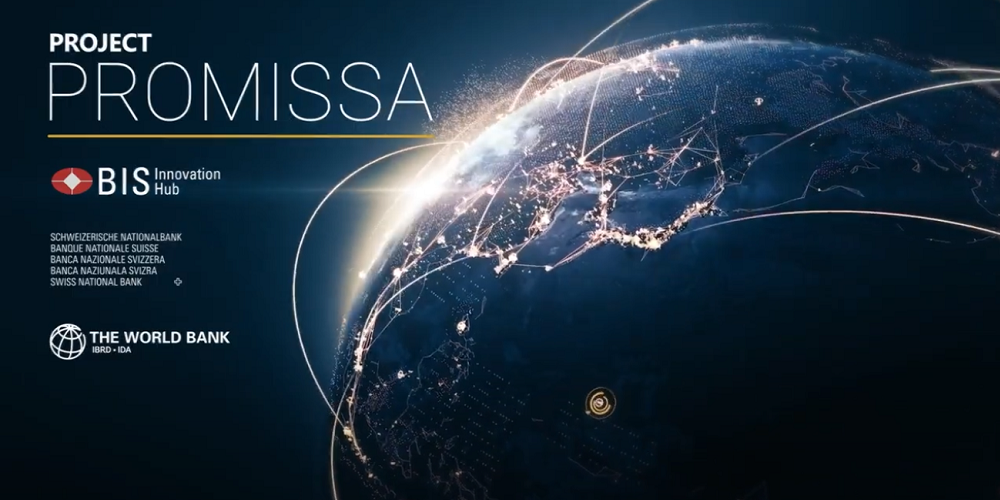
Project Promissa developed a proof-of-concept (PoC) platform for tokenised promissory notes, which could replace the current paper-based notes and automate many manual processes. „The experiment demonstrated that the PoC is technically feasible and could provide substantial cost savings for multilateral development banks (MDBs), central banks, and Ministries of Finance alike.” – according to the press release.
Project Promissa, a collaboration between the Bank for International Settlements’ Innovation Hub, the Swiss National Bank, and the World Bank, has demonstrated that paper-based promissory notes can be redesigned using distributed ledger technology (DLT) to address operational challenges that make the process time-consuming and cumbersome.
A promissory note is a financial instrument that contains a written and signed commitment by one party to pay a specified sum of money to another over a predetermined period.
Since their creation, MDBs like the World Bank and others have used promissory notes to track and encash multi-year financial commitments from member countries in a process that is overly complicated and requires constant reconciliation. The volume of promissory notes across MDBs is significant, representing a substantial portion of contributions pledged by member countries.
Project Promissa developed a Proof of Concept (PoC) platform for tokenised promissory notes, enabling more efficient management of the notes throughout their lifecycle, from issuance to payment and archiving, thereby automating manual processes and reducing time and costs.
Project Promissa reimagines the management of promissory notes by digitising these financial commitments and putting them on a distributed ledger in a process known as tokenisation. The project built a proof-of-concept (PoC) platform for tokenised promissory notes and tested the following key features with several central banks, ministries of finance and MDBs.
Key features
Single source of truth – ensures a real-time availability of the true state of promissory notes (golden record), eliminating the need for messages and reconciliation between all involved parties
Multiparty signatures – automate manual approval processes and speed up the handling of lifecycle events – such as issuance, encashment, and archiving of promissory notes – from weeks to seconds
Confidentiality – ensures that records of the promissory notes are shared exclusively with the involved parties
Sovereignty – preserves each party’s ownership, control, and decision-making authority over its promissory notes
„Project Promissa is a clear example of how blockchain can be used for the public good. Paper-based promissory notes have been in place since the Bretton Woods institutions were established, helping to finance their important activities worldwide. The digital solutions tested by Promissa represent a significant step forward in modernising this process in a cost-effective manner.” – said Morten Bech, Head of the BIS Innovation Hub’s Swiss Centre
„Project Promissa is a forward-looking initiative that contributes to the G20’s vision of better, and more effective multilateral development banks. The World Bank is proud to collaborate with the BIS Innovation Hub and the Swiss National Bank in shaping practical solutions that support transparency, trust, and scale in development finance. By exploring how member contributions can evolve through tokenised promissory notes, this project helps us reimagine a key part of our financial architecture and it is a powerful example of how blockchain can be harnessed for global good.” – said Jorge Familiar, Vice President and Treasurer, World Bank.
„As the custodian of Switzerland’s promissory notes, we value the digitisation of our operations through distributed ledger technology. Project Promissa points to a unique opportunity to modernise error-prone paper processes and establish a single source of truth, significantly reducing reconciliation needs and enhancing efficiency.” – Thomas Moser, Alternate Member of the Governing Board, Swiss National Bank.
The DLT platform ensures users have a single source of truth, enables multiparty signatures and guarantees confidentiality while maintaining each party’s ownership, control and decision-making power over its promissory notes. Participants from seven countries contributed to the testing and gave feedback to improve the PoC. The International Monetary Fund participated as an observer.
The results published in the final report show that such a platform is technically feasible. It also demonstrated that the platform can be tailored to meet various requirements. More work would be required to make it operational.
___________
Project Promissa explores how to make the funding processes of multilateral development banks (MDBs) fit for the 21st century, a goal of the G20. Today, MDBs fund their activities in various ways, including through member subscriptions and contributions, which are usually paid in cash or paper-based promissory notes.
Project Promissa showed that paper-based promissory notes, used to manage countries’ financial commitments to multilateral development banks, can be redesigned using distributed ledger technology to address operational challenges and improve efficiency.
Banking 4.0 – „how was the experience for you”
„To be honest I think that Sinaia, your conference, is much better then Davos.”
Many more interesting quotes in the video below: